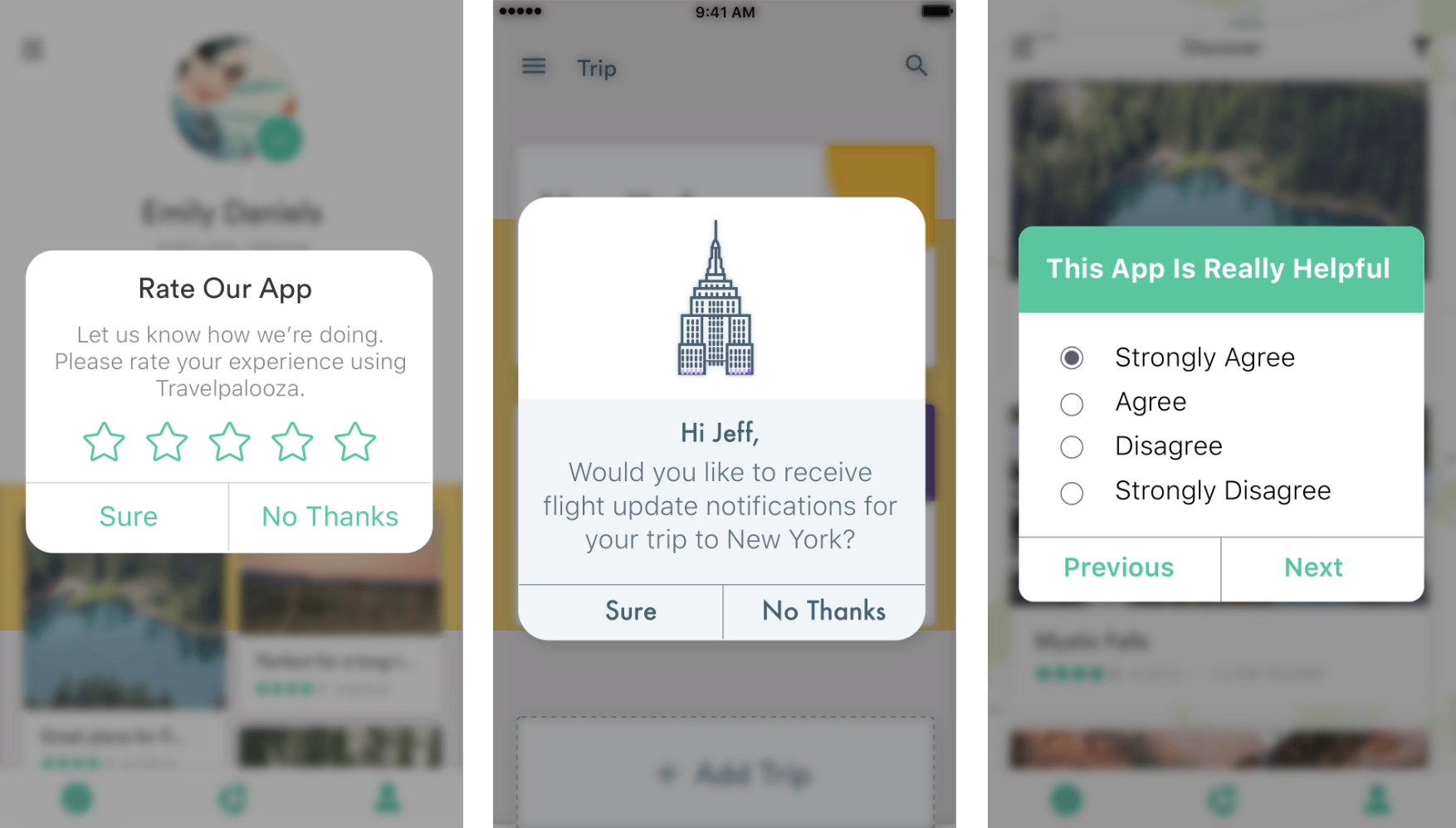In-App Notifications
Interested in Leanplum?
What Are In-App Notifications?
Also known as in-app messages, in-app notifications are messages that pop up while a user is in your app. In-app notifications come in the form of full-screen pop-ups or small overlays, styled to fit your app’s user interface. The content of these in-app notifications could include asking users to rate the app, asking users for push notification opt-ins, and more.
How Do In-App Notifications Work?
In-app notifications contain the same elements as in-app messages and push notifications. They do not slow down the interface or hinder the user experience, nor do they require the user to opt-in. However, they’re also similar to push app notifications in some ways. In-app notifications can present themselves in the form of a pop-up and invite users to engage. The difference is that they’re confined to the app itself. This means that engagement rates are likely to be higher — users are already using the app, and the sudden flash of content is likely to divert their attention.
In-app notifications can alert users to important content such as information about a promotion. They can also help marketers glean more information about their customers by asking them to complete a short survey. This in turn can help to improve the whole customer experience — any faults within the app will be reported to developers straight away and improved upon instantly, whilst making users feel valued for their opinions.
What Are The Best Practices For In-App Notifications?
If you’re running a promotion, you can leverage in-app notifications to provide users with all the information they need. While a homepage offer on a mobile app might alert users to a small amount of content, in-app notifications can provide further details such as coupon codes and expiry dates.
Marketers should also be ready to approach in-app notifications through trial and error with A/B testing. That way, marketers can present the best, most engaging content to the largest volume of users, having studied multiple variables such as call-to-action text and promotion types.
What Do In-App Notifications Mean For Marketers?
In-app notifications are great for marketers to ask their users to do something, such as opting in to push notifications. This in turn opens up a whole new host of marketing options. You could send push notifications based on time of day, customer behavior, or location. It opens up the opportunity to encourage users who have not engaged with the app in some time to return and convert.
Moreover, marketers can learn more about their users by asking them to rate their app on the App Store. This offers key information about user experience. With this information, marketers can optimize their app to improve their average rating, eventually leading to more app downloads. With more users and more returning customers, conversion rates will increase, providing a better return on investment.
To find out how to better engage your audience through app notifications and mobile app messaging, visit Leanplum’s 6 Minute Guide to Mobile Messaging.







